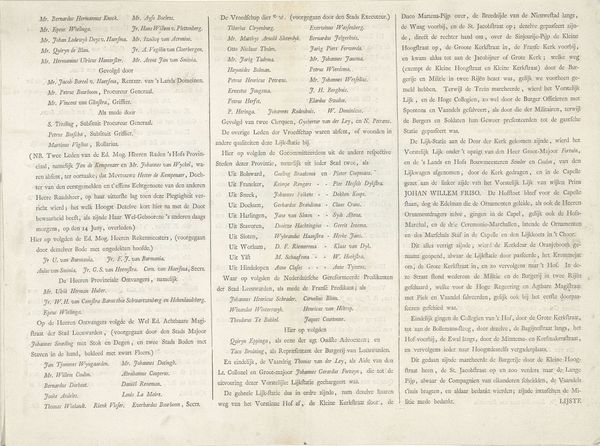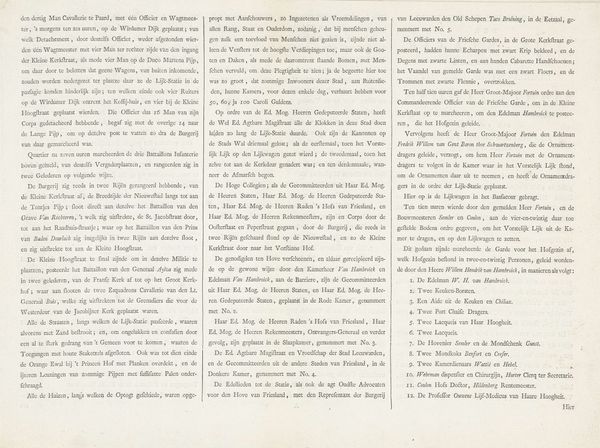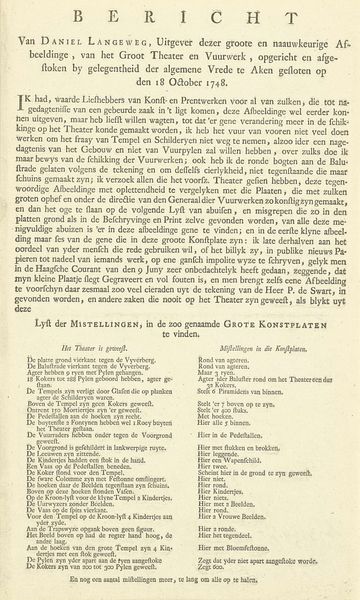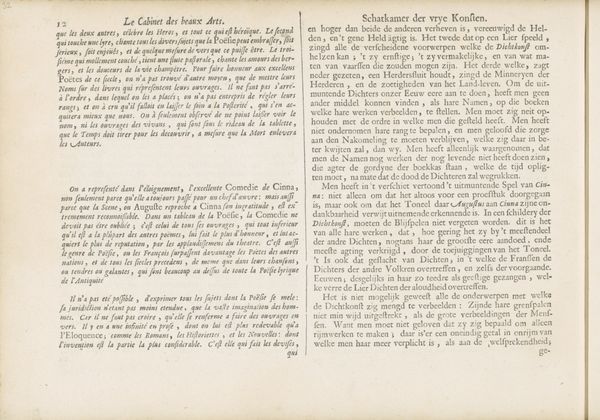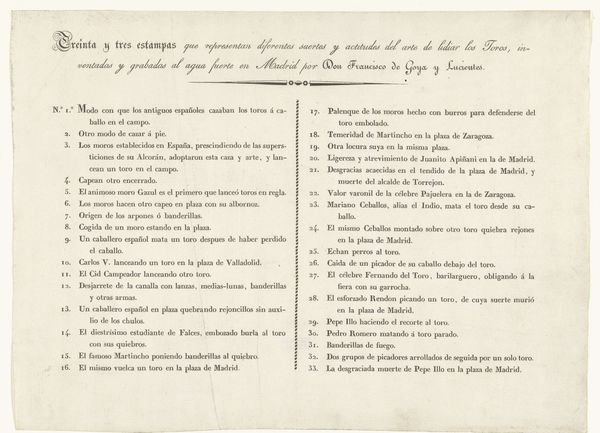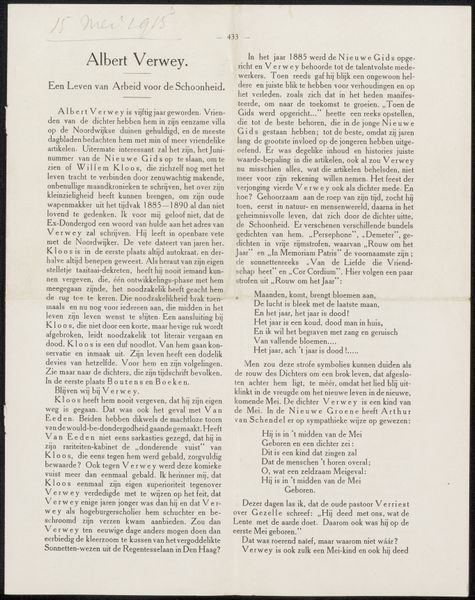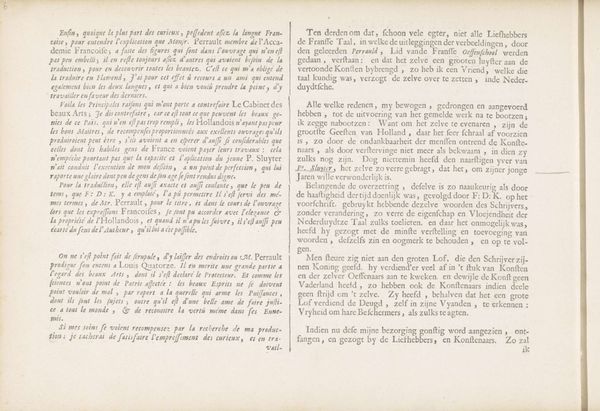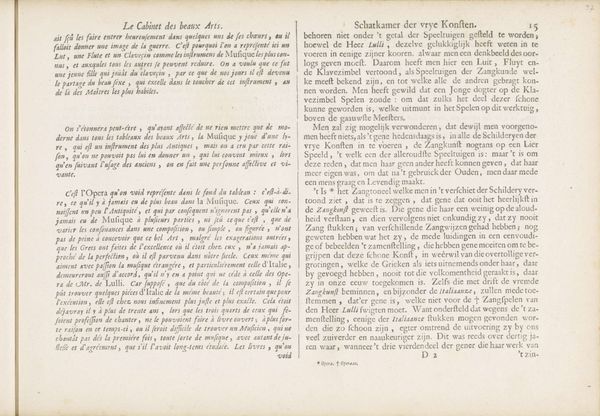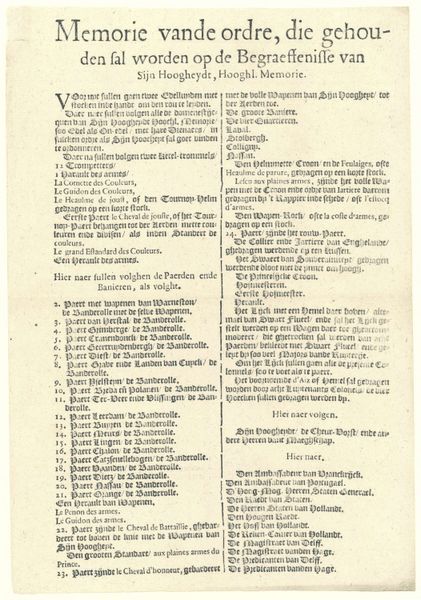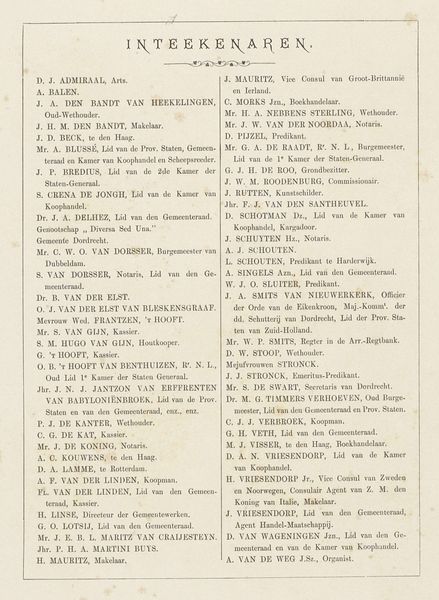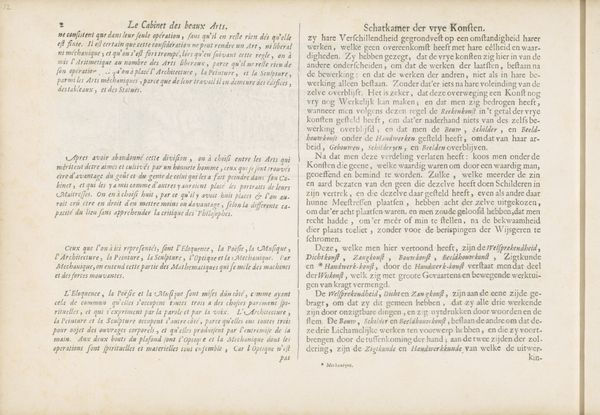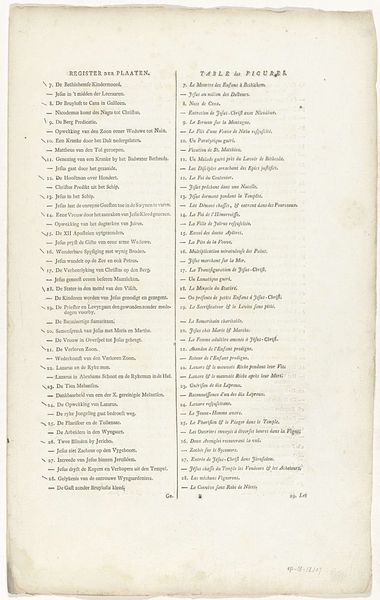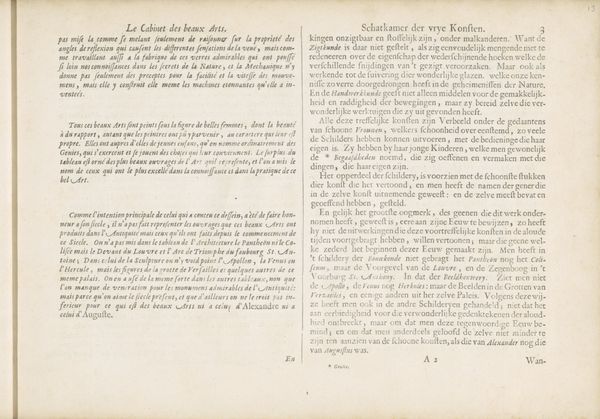
graphic-art, print, typography
#
graphic-art
# print
#
typography
Dimensions: height 283 mm, width 391 mm
Copyright: Rijks Museum: Open Domain
Curator: I'd like to present "Beschrijving van de begrafenis van prinses Maria Louise, 1765," a typographic print detailing the funeral procession of Princess Maria Louise of Hesse-Kassel. It dates back to 1765, the very year of the event. What strikes you upon first glance? Editor: Overwhelmingly somber, if I’m being honest. It feels very regimented. The rigid columns of text resemble rows of soldiers… or perhaps mourners. The detail in the lists, they seem almost obsessive. Curator: Indeed. The lists delineate the order of procession and the participants—the nobles, officials, and various estates. It's a document steeped in the rituals and protocols of the time. Editor: This isn't simply a recounting; it's a demonstration of power, structured around loss, really. Think of the social hierarchy inscribed within the parade itself and reiterated with the print. Who gets to be mentioned? And in what order? It creates a powerful, visual, or rather, textual metaphor for that order. Curator: Absolutely. It encapsulates the cultural memory surrounding Maria Louise—she was incredibly popular. Her funeral would have been a moment of profound symbolism. This detailed documentation attempts to preserve, but also to codify, her legacy and the established social structure. Editor: Makes me think of contemporary memorial projects, where we try to encapsulate the magnitude of loss, and inadvertently cement other things in the process. It's almost as if this funeral and this piece act as an anchor, mooring not only her memory but a particular political reality to the present moment. Curator: An anchor to an older time… It allows us to remember a moment when a princess’s passing was a spectacle that affirmed social hierarchies. Editor: It’s striking how something designed to commemorate can also, unintentionally, reveal deeper cultural currents, perhaps far beyond the intent of Abraham Ferwerda, the artist, himself. Curator: A poignant reflection—the artwork speaks across time, whispering forgotten truths that touch the past.
Comments
No comments
Be the first to comment and join the conversation on the ultimate creative platform.
